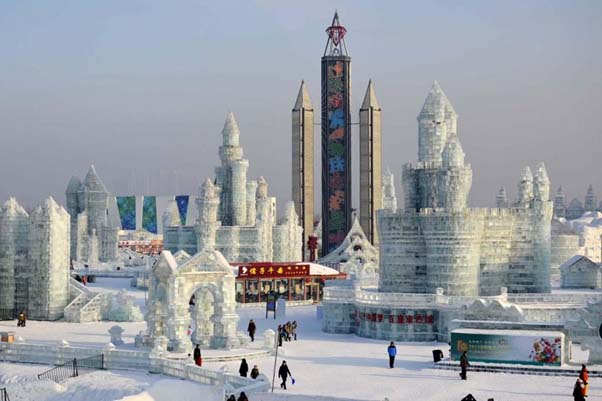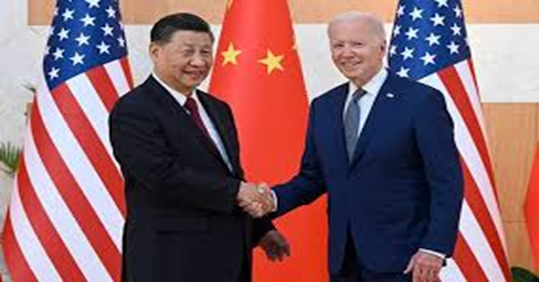Japan and the Satoyama Initiative
Posted on : August 31, 2023Author : Debanjana Chakraborty

On 23rd January 2023, Japan’s Famous Chef Yoshihiro Narikawa published his much awaited Cookbook titled ‘Satoyama Cuisine’ which is a brilliantly illustrated piece on culinary philosophy. It draws its inspiration from the Japanese tradition of foraging and gathering of useful ingredients and using them in a sustainable manner. The book is not simply an exploration of gastronomy but assumes an elaborated role in the exploration and Conservation of Japanese landscape and identity. Perhaps, this book is a greater extension of the Initiative that Japan itself orchestrated on the 19th October 2010 as a conscious attempt towards the protection of bio-diversity and the environment. This initiative is known as the ‘Satoyama’ Initiative that aims for a holistic approach towards environmental protection and innovation.
From its beginning, the SatoyamaInitiative has taken a worldwide viewpoint and looked to ensure expertise from around the world with respect to the maintainable utilization of assets in SEPLS. The Initiative’s idea was created in a series of gatherings and counsels. One significant achievement came in January 2010, when the Global Workshop on the SatoyamaInitiative was held at the main Headquarters of the United Nations Educational and Scientific and Cultural Organisation (UNESCO) in Paris. The Global Workshop was based on two preliminary workshops held in Asia, the main in Tokyo, Japan in July 2009, and the second in Penang, Malaysia in October 2009. The goals of the Global Workshop were to examine the Satoyama Drive’s idea and characterize the components of exercises to be considered for the Initiative. The Paris Announcement on the Satoyama Drive was one of the major outcomes of the Paris Workshop. It was subsequently submitted to the CBD’s fourteenth Conference of the Subsidiary Body on Scientific Technical and Technological Advice (SBSTTA-14) as one of the official Documents of the gathering, and turned into a key report that prompted the Initiative’s eventual acceptance during the tenth meeting of the Conference of the Parties to the Convention on Bio-Diversity (CBD COP 10), held in Nagoya, Japan in 2010.
Key Objectives of the Initiative
The Initiative was meant to function in accordance with a three-fold Approach which includes the consolidation of values and wisdom for the appropriate protection of the ecosystem and bio-diversity, it aims at the integration of different innovative policies for the promotion of the protection of Bio-diversity and it also aims towards the creation and exploration of new forms of co-management system that shall lead to the protection of diverse eco-systems while heralding their individualism. Through this three-fold approach, the Initiative essentially tries to ‘create synergy between traditional knowledge and modern science in order to promote innovations’.
Through this three-fold Approach, the Satoyama Initiative essentially is dedicated towards the building and maintenance of the ecological landscape of the various localities and this achieved through the adoption of six main perspectives:
- The usage of resources keeping in mind the relative durability of the environment it is part of.
- A renewable pattern of energy use
- Recognition and preservation of the different forms of local traditions and customs.
- Multifaceted participation in the processes of different sustainable environmental projects concerning natural resources and ecosystem.
- Ensuring adequate contributions through poverty alleviation, sustainable livelihood and also local community empowerment.
- Ensuring the encouragement of greater amounts of ‘Community-resilience’ which also put into its fold numerous ecological, cultural and spiritual ideas and benefits.

Recent Developments of the Initiative
The Satoyama Initiative organises various Conferences, meetings, events in order to bring it’s together for the purpose of imparting and providing experiences and ideas. One of this include the IPSI Conference which is held annually and brings different dignitaries and diplomats into it. It discusses the potential future programmes that ought to be undertaken for the sustainable projects and it also entails the formulation of Policies that is geared towards the same. Apart from the annual IPSI Conference, one of the most recent developments of this Initiative includes the organisation of various which is geared towards the promotion of the Initiative towards the Grassroots Level. For instance, the Agricultural Bio-Diversity and UNESCO Biosphere Reserve: Bridging managed and natural landscapes in Cuba is aimed to ‘reinvigorate and traditional production systems that are compatible with bio-diversity conservation, assessing their multiple values and ensuring that these values are recognised by policy makers and in markets.’Apart from its numerous collaborative endeavours, the Satoyama Initiative is also trying to organise various regional workshops for the raising of Awareness regarding the Environmental issues. One of the most regional workshops occurred in Malaysia on April 2017. It included the formation of four groups that presided over the numerous environmental issues such as ‘Ecosystem Restoration, ‘Economic Incentives, ‘Traditional Knowledge and Communication, ‘Education and Public Health and Awareness’, it also included an exhibition that housed and displayed exotic culinary ingredients, plants, indigenous handicrafts and many more. As mentioned in the beginning of this essay, Satoyama culinary tradition was heralded by chefs like Yoshihiro Narisawa. In 2018, a magnificent exhibition titled ‘Satoyama: Evolving with the Forest’ had been organised by Japan House (Los Angeles) where Satoyama cuisine had been explored and displayed through sixty photographs, objects, writings and also brilliant presentation. Apart from this, there have been many renovation projects under this initiative. For example, the world Renowned Angkor Temple complex in Cambodia had been suffering massively from the ravages of Deforestation and Water Scarcity and the Authority for the Protection of the Site and Management of the Region of Ankgor (APSARA) from 2014-18 initiated the construction of a Park for greater supplies of Groundwater, mitigate floods and also provide irrigation, with the help of this initiative.
The initiative therefore encompasses a multi-faceted approach for the preservation of the bio-diversity and local traditions.
The Satoyama Initiative, thus, include the preservation of not only environmental issues concerning Japan and World but also brings into its fold the preservation and protection of the uniqueness of local cuisines, practices, identities and traditions.
References
- Satoyama Initiative Official Website (2023, August 20)
Link: https://satoyama-initiative.org/concept/satoyama-initiative/
- Satoyama Initiative, Document on the ‘Agricultural Bio-Diversity and UNESCO Biosphere Reserve: Bridging Managed and Natural Lanscapes in Cuba’
- Satoyama: Evolving with the Forest (2023, August 21)
Link: https://www.japanhousela.com/exhibitions/satoyama/
- Satoyama Initiative, Document on the Case Study of Effective Water Management for Landscape Management in the Siem Reap Catchment in Cambodia
Debanjana Chakraborty
Intern, Asia in Global Affairs
The originality of the content and the opinions expressed within the content are solely the author’s and do not reflect the opinions and beliefs of the website.




